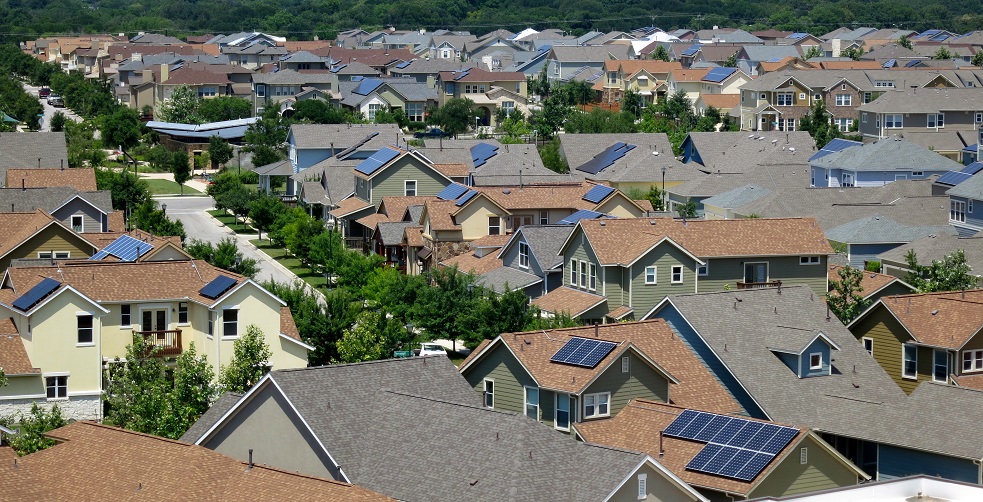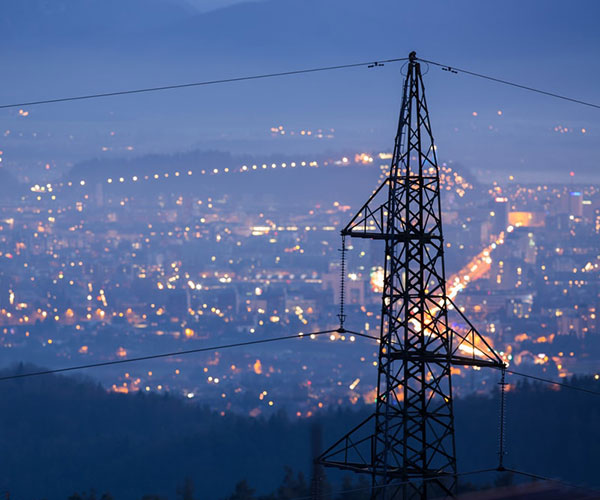According to researchers at the University of East Anglia (UEA) and the Global Carbon Project, global carbon emissions from burning fossil fuels did not grow in 2015 and are projected to rise only slightly in 2016, marking three years of almost no growth.
The projected rise of only 0.2% for 2016 marks a clear break from the rapid emissions growth of 2.3% per year in the decade to 2013, with just 0.7 per cent growth seen in 2014.
The new data is published in the journal Earth System Science Data. It shows emissions growth remained below 1 per cent despite GDP growth exceeding 3 per cent.
Decreased use of coal in China is the main reason behind the 3-year slowdown.
Prof Corinne Le Quéré, Director of the Tyndall Centre at UEA who led the data analysis, said: “This third year of almost no growth in emissions is unprecedented at a time of strong economic growth. This is a great help for tackling climate change but it is not enough. Global emissions now need to decrease rapidly, not just stop growing.”
China — the biggest emitter of CO2 at 29 per cent — saw emissions decrease by 0.7 per cent in 2015, compared to growth of more than 5 percent per year the previous decade. A further reduction of 0.5 per cent is projected for 2016, though with large uncertainties.
The USA, the second biggest emitter of CO2 at 15 per cent, also reduced its coal use while increasing its oil and gas consumption and saw emissions decrease 2.6 per cent last year. USA emissions are projected to decrease by 1.7 per cent in 2016.
The EU’s 28 member states are the third largest emitter causing 10 per cent of emissions. The EU’s CO2 emissions went up 1.4 percent in 2015, in contrast with longer term decreases.
India contributed 6.3 per cent of all global CO2 emissions, with their emissions increasing 5.2 percent, in 2015 continuing a period of strong growth.
Although the break in emissions rise ties in with the pledges by countries to decrease emissions until 2030, it falls short of the reductions needed to limit climate change well below 2 degrees Celsius.
Prof Le Quéré said: “If climate negotiators in Marrakesh can build momentum for further cuts in emissions, we could be making a serious start to addressing climate change.”
The Global Carbon Budget analysis also shows that, in spite of a lack of growth in emissions, the growth in atmospheric CO2 concentration was a record-high in 2015, and could be a record again in 2016 due to weak carbon sinks.
Prof Le Quéré said: “Part of the CO2 emissions are absorbed by the ocean and by trees. With temperatures soaring in 2015 and 2016, less CO2 was absorbed by trees because of the hot and dry conditions related to the El Niño event. Atmospheric CO2 levels have exceeded 400 parts per million (ppm) and will continue to rise and cause the planet to warm until emissions are cut down to near zero.”
The Global Carbon Project’s estimation of global CO2 emissions and their fate in the atmosphere, land and ocean is a major effort by the research community to bring together measurements, statistics on human activities, with analysis of model results.
Prof Le Quéré stressed the need for reporting such as the Global Carbon Budget to inform decisions and actions on how to respond to climate change.
Dr Glen Peters of the Center for International Climate and Environmental Research in Norway, who co-authored the analysis, said: “Emissions growth in the next few years will depend on whether energy and climate policies can lock in the new trends, and importantly, raise the ambition of emission pledges to be more consistent with the temperature goals of the Paris Agreement.”
Reference(s):
Publication: Corinne Le Quéré, Robbie M. Andrew, Josep G. Canadell, Stephen Sitch, Jan Ivar Korsbakken, Glen P. Peters, Andrew C. Manning, Thomas A. Boden, Pieter P. Tans, Richard A. Houghton, Ralph F. Keeling, Simone Alin, Oliver D. Andrews, Peter Anthoni, Leticia Barbero, Laurent Bopp, Frédéric Chevallier, Louise P. Chini, Philippe Ciais, Kim Currie, Christine Delire, Scott C. Doney, Pierre Friedlingstein, Thanos Gkritzalis, Ian Harris, Judith Hauck, Vanessa Haverd, Mario Hoppema, Kees Klein Goldewijk, Atul K. Jain, Etsushi Kato, Arne Körtzinger, Peter Landschützer, Nathalie Lefèvre, Andrew Lenton, Sebastian Lienert, Danica Lombardozzi, Joe R. Melton, Nicolas Metzl, Frank Millero, Pedro M. S. Monteiro, David R. Munro, Julia E. M. S. Nabel, Shin-ichiro Nakaoka, Kevin O'Brien, Are Olsen, Abdirahman M. Omar, Tsuneo Ono, Denis Pierrot, Benjamin Poulter, Christian Rödenbeck, Joe Salisbury, Ute Schuster, Jörg Schwinger, Roland Séférian, Ingunn Skjelvan, Benjamin D. Stocker, Adrienne J. Sutton, Taro Takahashi, Hanqin Tian, Bronte Tilbrook, Ingrid T. van der Laan-Luijkx, Guido R. van der Werf, Nicolas Viovy, Anthony P. Walker, Andrew J. Wiltshire, Sönke Zaehle. Global Carbon Budget 2016. Earth System Science Data, 2016
Research story: University of East Anglia | November 14, 2016 (source)



















Comments